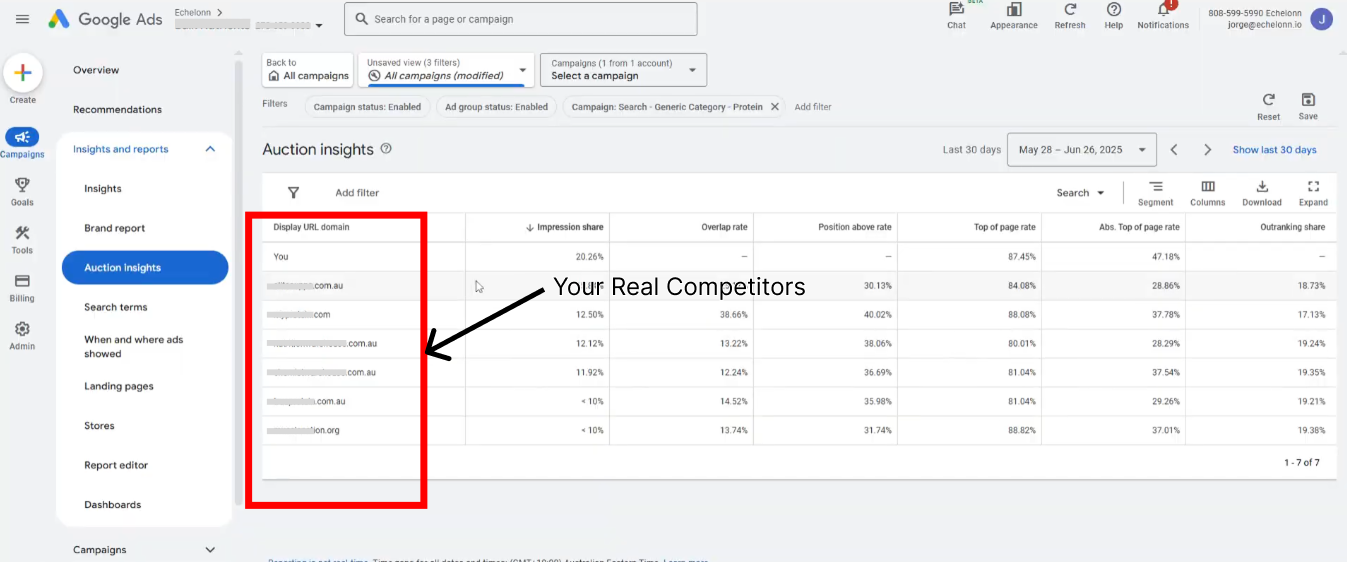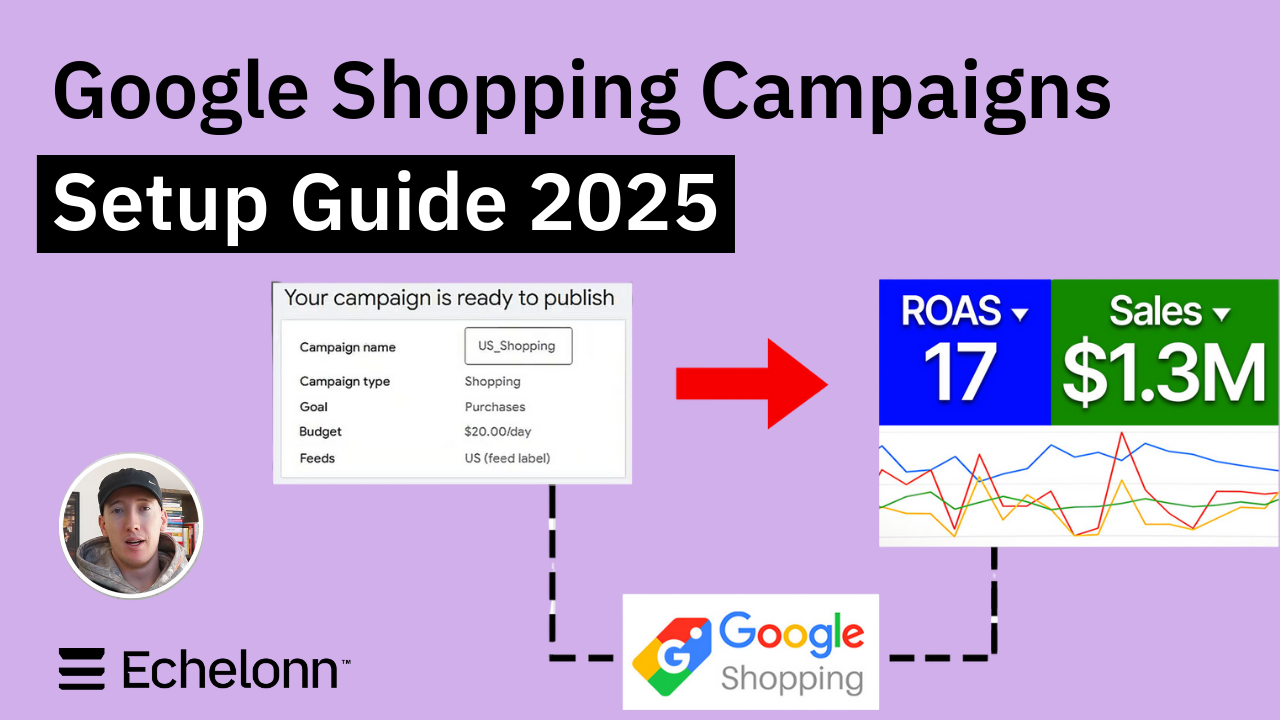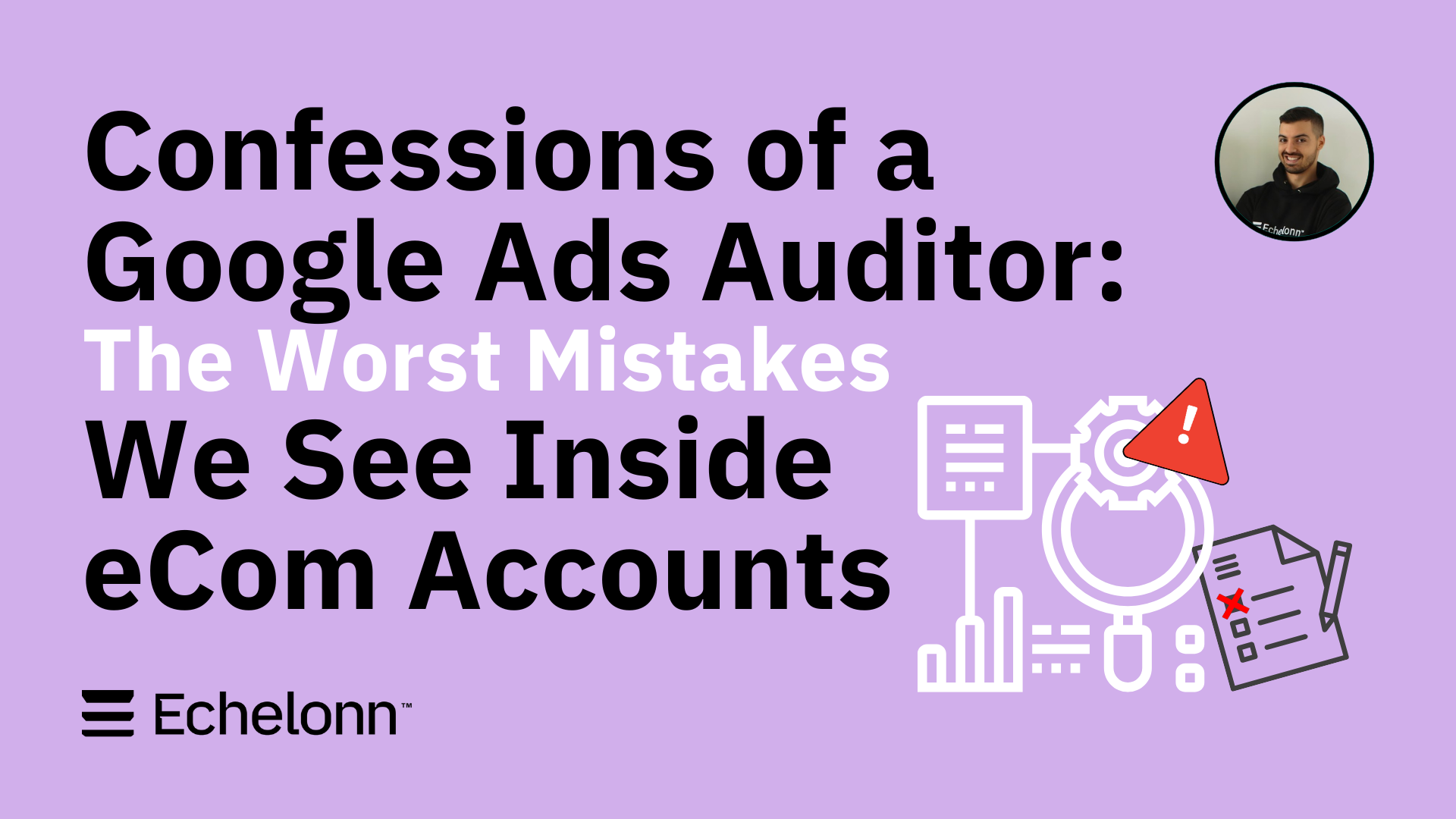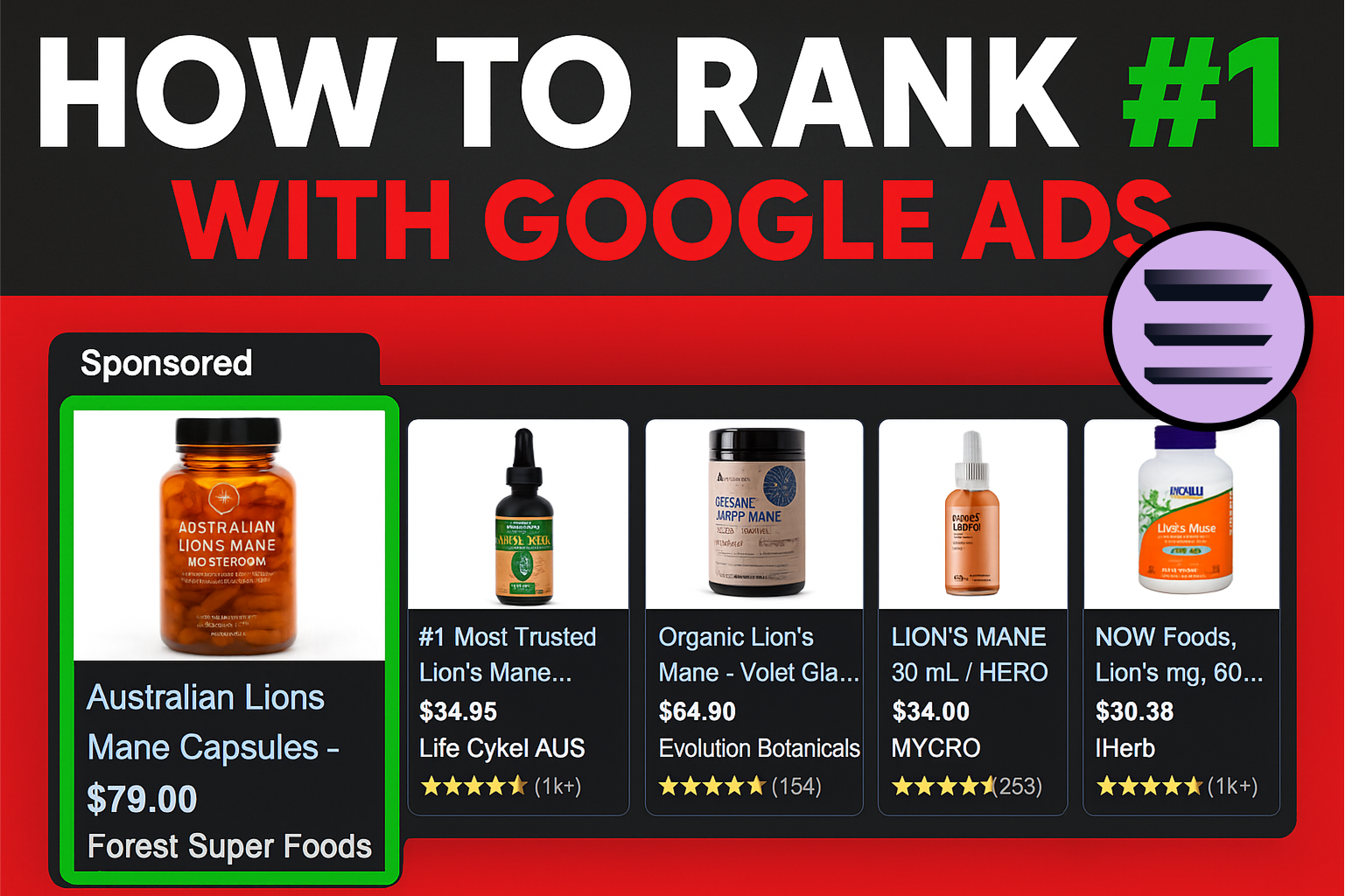How to Spy on Competitor Google Ads: Complete 2025 Guide


Video Breakdown:
Introduction
Your competitors are running ads right now, bidding on your keywords and targeting your customers. The question isn't whether you should be watching them, it's how effectively you're doing it.
We manage over $10 million in Google Ads spend monthly across our client portfolio. Through this experience, we've learned that competitive intelligence isn't optional anymore—it's survival.
The numbers tell the story. Recent industry benchmarks show that 87% of industries experienced increased CPCs, with an average year-over-year rise of 12.88%. Rising costs mean every dollar faces more competition, every click costs more, and every customer acquisition becomes harder to justify.
Most advertisers think they know their competitors. They're wrong. They base analysis on assumptions instead of data. You might assume Company X, Y, and Z are your main rivals. Meanwhile, three other brands you've never heard of are outbidding you on your highest-value keywords.
Here's the good news: you don't need expensive consultant fees to spy on competitors effectively. Google provides powerful tools that most advertisers ignore or underutilize. Similar to Meta's Ads Library, Google offers transparency into competitor strategies across all ad formats.
You can see exactly what competitors are running on Shopping, Search, Display, and YouTube. Their messaging. Their offers. Their creative strategies. Their geographic targeting. All completely free.
We'll show you exactly how to spy on competitor Google Ads using methods that require no special access or expensive tools. You'll learn to identify your real competitors, analyze their strategies, and turn competitive intelligence into profitable action.
Why Spying on Competitor Google Ads is Essential
The Rising Cost Reality
Higher costs mean smaller margins. Every wasted dollar on inefficient campaigns hurts more than before. When we analyze client accounts, the businesses thriving despite rising costs share one trait: they know exactly what their competitors are doing.
Rising CPCs create several critical challenges:
- Budget gets consumed faster with fewer conversions
- Profit margins shrink on the same conversion volume
- New competitors can outbid established players overnight
- Market share shifts happen quickly without warning
Also, what many advertisers miss is the proper impact competitors can have on your performance. That performance shift you see one day might not be because your copy is running thin, or your offers suck. But because new players are entering the game and are adjusting their strategies.
Smart advertisers study their competition to find gaps. They discover which keywords competitors avoid, spot messaging that resonates, and identify seasonal patterns that predict market shifts.
Understanding Real vs Perceived Competitors
Many advertisers misidentify their actual competitors due to assumptions rather than auction data. We talk to so many business owners that they think they know who competes for their customers, but assumptions don't match reality.
Common misconceptions about competitors include:
- Assuming industry leaders are your biggest threats
- Focusing on brands with similar products only
- Ignoring new market entrants with aggressive strategies
- Overlooking competitors targeting your brand terms
We've seen clients waste months analyzing the wrong competitors while their actual competitors gain market share unchallenged.
Method 1: Using Google Ads Auction Insights

Most advertisers overlook this free tool built into every Google Ads account, yet Auction Insights is significantly underleveraged despite its value for competitive intelligence.
Accessing Auction Insights
Navigate to your Google Ads dashboard:
- Click "Insights and Reports" in the left sidebar
- Select "Auction Insights" from the dropdown
- Choose your date range (start with the last 30 days)
Don't analyze at the account level—that gives you watered-down data. Click into your highest-performing campaigns and drill down to top-performing ad groups for granular insights.
Understanding Key Metrics:
Tracking Performance Over Time
Set date ranges to analyze weekly data and spot emerging threats. Look for competitors gaining impression share—steady upward trends indicate increased bids or improved quality scores.
When you analyze weekly, you can react faster than with less frequent reviews. Watch how competitors react in the weeks following your promotions.
Method 2: Google Ads Transparency Center

Google's Ads Transparency Center works like Meta's Ads Library, showing every ad your competitors run across all Google platforms. This free tool provides complete visibility into competitor campaigns across all countries and ad formats, and even shows the last time an ad was shown, which is incredibly valuable for competitive analysis.
How to Access and Use It
Navigate to the Google Ads Transparency Center. No login required.
Enter your competitor's domain (use "competitor.com" not "www.competitor.com"). Results show:
- Current campaigns across all Google properties
- Historical data going back months
- Geographic targeting information
- Ad format breakdowns
Filter by country for location-specific campaigns and use date filters to analyze timing patterns.
Analyzing Competitor Creative
Study competitor headlines for messaging patterns and repeated value propositions. Use this framework:
Save monthly screenshots to identify testing patterns and successful variations. Track messaging evolution over time and seasonal shifts.
Advanced Google Ads Spy Techniques
Multi-Format Analysis
Don't just focus on search ads. Successful advertisers use multiple formats to maximize reach across the customer journey.
Shopping Ads:
Look for pricing strategies, product prioritization, and promotional callouts.
For comprehensive Shopping optimization strategies, see our complete guide to Google Shopping ads benchmarks and pricing.
Search Ads:
Analyze headline patterns, ad extensions, and seasonal messaging. Learn more about advanced search ad strategies for eCommerce.
Display/YouTube:
Study visual approaches, video lengths, and call-to-action strategies. Check our complete YouTube advertising guide for format-specific insights.
Geographic and Demographic Intelligence
Use VPN tools to view ads from different locations. Note which competitors appear in premium vs. secondary markets to identify geographic gaps.
Analyze messaging for demographic clues, age-specific language, gender-focused products, or audience-specific offers reveal targeting strategies.
Again, while you can view this directly on Google search, you can do this easily on Google ads transparency.
Seasonal Pattern Recognition
Track competitor activity throughout the year:
- Screenshot ads monthly to build a seasonal database
- Monitor landing pages for seasonal offers
- Use Google Trends to correlate activity with search patterns
- Set up Google Alerts for competitor promotional keywords
Build a 12-month calendar tracking when competitors increase spend, launch promotions, and adjust messaging themes.
Third-Party Google Ads Spy Tools

Free Options
- MozBar: Basic competitor website analysis
- Keywords Everywhere: Search volume data in your browser
- Google Trends: Seasonal pattern identification
- SimilarWeb: Basic traffic insights
Free tools provide surface-level insights but lack granular keyword and ad copy data
Premium Tools
- SEMrush: Most comprehensive PPC competitor analysis
- SpyFu: Specializes in Google Ads with historical data
- Ahrefs: Excellent keyword gap analysis
When to Upgrade
Start with free tools if you're managing under $10,000 monthly spend. Upgrade to paid tools when managing multiple campaigns, needing historical data, or requiring detailed keyword gap analysis. Learn more about scaling Google Ads with small budgets before considering premium tools.
Competitor Keyword Spy Strategies
Identifying High-Value Keywords
Start with auction insights data focusing on competitors with highest impression share overlap. Look for:
- Multiple competitors bidding on the same terms
- Consistent presence over weeks/months
- Keywords appearing in shopping campaigns
Track competitor keyword performance by monitoring ad copy changes—frequent updates indicate optimization for high-value terms.
Gap Analysis
Compare your keywords against competitor data to find three opportunities:
Competitive Bidding Strategies
Defensive: When competitors target your brand keywords, increase bids gradually while improving ad relevance. Our guide on branded vs non-branded campaign structure explains why this matters, branded keywords outperform non-branded by 19x.
Offensive: Target competitor brand keywords strategically, focusing on those with weak ad copy or poor landing experiences.
Set up separate campaigns for competitor keywords to allow better budget control and performance tracking.
How to Actually Use Your Google Ads Competitor Data
A Summary of Actions You Should be Doing:
- Immediate opportunities: Gaps in competitor coverage requiring quick action
- Strategic shifts: Trends requiring deeper analysis and planning
- Defensive moves: Protecting your market position
- Auction insights: Weekly checks for core campaigns
- Transparency center: Bi-weekly competitor creative reviews
- Keyword monitoring: Track bidding patterns across categories
Avoiding Common Mistakes
Copying instead of adapting kills differentiation. Extract principles, not content.
Focusing on vanity metrics wastes resources. Prioritize competitors targeting your highest-value keywords.
Over-reacting to temporary changes creates instability. Wait for patterns before making major shifts.
Neglecting smaller competitors blinds you to emerging threats from VC-backed startups or niche players.
When considering whether to handle competitive analysis in-house or with an agency, our comprehensive comparison guide can help you make the right decision based on your ad spend and resources.
Conclusion
Spying on competitor Google Ads isn't about tricks. It's about making smart, data-driven decisions in an expensive advertising landscape.
Start with Google's free tools. Auction Insights reveals your real competitors, while the Transparency Center shows every ad they're running. These provide the foundation for effective analysis.
Focus on granular analysis at the campaign and ad group level. Track impression share changes weekly and monitor who's outranking you on profitable keywords. Understanding how to rank #1 on Google Ads will help you compete more effectively against these insights.
Use competitive intelligence to identify gaps, inform bidding strategies, and guide ad copy testing. Set up monitoring systems to catch changes quickly—the landscape shifts rapidly.
The goal isn't blind copying but understanding market dynamics and identifying missed opportunities. Your competitors are already using these techniques. The question is whether you'll join them or let them gain an unfair advantage.
If you're wondering how long it takes for Google Ads to work, competitive intelligence can help accelerate your path to profitability by learning from proven strategies.
The data is waiting. Use it.

Ready To Start Scaling Today?
Scaling Your Favorite eCommerce Brands To The Highest Levels Through Google & YouTube Ads.

.svg)
Get Smarter About How To Scale Your Brand...
Discover Insider Knowledge On How We Scale Brands From 7 Figures All The Way Up To 8-9 Figures With Google Ads.
More Articles Like This.
Find answers to common queries about our services and how we can help you.
.svg)
.png)
How to Improve Your Google Ads Conversion Rate
.png)
The Right Way to Link Shopify and Google Ads for Scalable Growth

Google Shopping Campaigns Setup Guide 2025

Confessions of a Google Ads Auditor: The Worst Mistakes We See Inside eCom Accounts

How to Spy on Competitor Google Ads: Complete 2025 Guide
%20(2).png)
7 Questions to Ask Before Hiring a Google Ads Consultant

How to Rank #1 on Google Ads: Complete Shopping & Search Guide 2025
.png)
Learning Google Ads in 2025: The Roadmap Nobody Talks About
%20(1).png)
What Makes a Google Ads Specialist Worth $10,000/Month?

Why Cheap Google Ads Consulting Costs You $180,000+ in Lost Revenue
.png)
Why 99% of Google Ads Experts Fail (& How to Find One That Won’t)
.png)
5 Google Product Feed Fixes for eCom Growth
.png)
Google Ads Campaign Structure: Why 95% of Brands Waste Budget on Mixed Traffic

In-House vs Agency Google Ads: Which Delivers Better ROI in 2025?
.png)
How to Scale Google Ads With a Small Budget | Setup and Optimization

Google Shopping Optimization: 11 Proven Tactics for Maximum ROAS
%20(3).png)
eCom Growth Strategy: How We Scaled a Supplement Brand From $1.9M to $8.6M With Google Ads
%20(4).png)
Google Merchant Center Fix: How to Improve Rankings With Accurate Shipping Times

CTR Is Misunderstood by 95% of the PPC Industry (What to Optimise for Instead)
.png)
Google Ads AI | Manual vs Automated Campaign Performance

Complete YouTube Ads Guide 2025 | 3 Formats, 5 Principles, Proven Results
%20(2).png)
eCom Growth Strategy With Google Ads in 2025
.png)
Google Marketing Live 2025: 11 Key Takeaways for Marketers
%20(1).png)
YouTube Advertising Strategy: How to Drive Results Across Every Format

Google Shopping Feed Optimisation: Tips for Better Results

How Long Does it Take for Google Ads to Work?

Search Ad Strategies to Maximize Sales with Google ads for eCommerce (2024)

2025 Google Shopping Ads: Ultimate Guide, Benchmarks, and Pricing Breakdown


.svg)

.svg)
.svg)





